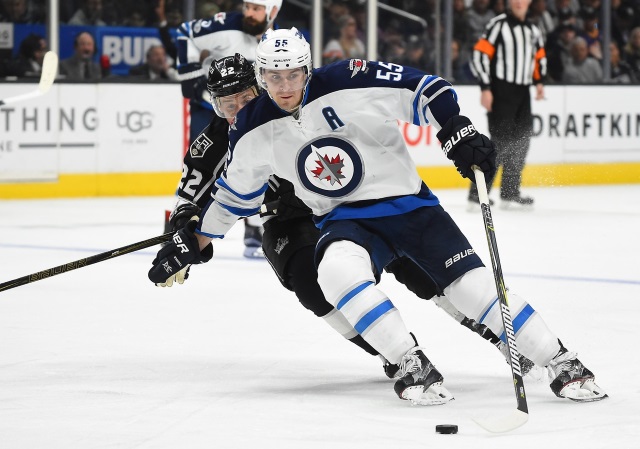Every year, a handful of players easily surpass their previous career highs and produce a lot more than anyone could have expected.
Opportunity often plays a big role — if you put a good player in a good situation you’re going to get good results — but luck does, too.
Let’s take a look at three players who had luck on their side last season and will struggle to duplicate their success next season.
T.J. Oshie – Washington Capitals
As a 30-year-old, Oshie had his most productive season to date setting career highs in goals (30), goals per game (.49), and points per game (.82).
Part of Oshie’s success can be attributed to making the most of the situation he was in — Oshie spent almost 80% of his 5v5 ice centered by one of the league’s top playmakers in Nicklas Backstrom — but there was luck involved, too. And a lot of it.
Oshie’s shots found their way into the back of the net almost 10% more frequently than his career average, which takes into account last season’s aberration, and 9% more than his previous career best. This also came in Washington while playing an identical role (again, his two most frequent linemates were Backstrom and Alexander Ovechkin).
Simply put, Oshie rode the percentages to his 30 goal season and the eight-year, $46 million contract extension that followed.
He is a good player, but if the Capitals are expecting him to duplicate last season’s production (.49 goals per game, .82 points per game), they’re going to be awfully disappointed.
Michael Grabner – New York Rangers
Following a nine-goal campaign with the Toronto Maple Leafs, Grabner bounced back in a big way chipping in 27 goals while making just $1.65 million.
The Rangers seem like a perfect fit for his style — they play very fast — but it’s unlikely he will continue to score at that rate, or anywhere close. Like Oshie, he benefited from a high shooting percentage that is not sustainable over time.
In four seasons before last, Grabner averaged 16 goals per 82 games while shooting 10.6%.
Last season, Grabner scored 27 goals in 76 games (29 per 82) while shooting upwards of 17%. Had he shot 10.6%, he would have scored 17 goals, which is right in line with his average the four previous years.
That’s still a very respectable total, especially given Grabner’s salary, but a pretty significant difference.
If history is any indication, last season will be an exception — not the norm –, and Grabner will be back in the 15-goal range next season.
Mark Scheifele – Winnipeg Jets
Scheifele has emerged as one of the better centers in the league, and he has a good supporting cast around him, but he probably won’t be a top-10 scorer again next season.
Scheifele played 307 more minutes in 2016-17 than 2015-16 yet recorded 42 fewer shot attempts, 34 fewer shots on goal, and 20 fewer scoring chances.
Despite that, he scored three more goals than the year prior. Why? An unsustainably high shooting percentage certainly played a role.
Before last season, he was a 12.2% shooter. Last season, he scored on 20% of his shots.
Scheifele is an excellent player and does have a good shot, but I think it’s fair to say NHL goaltenders will stop more than 80% of his shots moving forward.
Scheifele also benefited from a lot of secondary assists, and a high on-ice save percentage, which helped inflate his totals.
With Scheifele on the ice at 5v5, the Jets scored on 11.67% of their shots. That, of course, means goaltenders posted a lackluster save percentage of 88.33 with Scheifele on the ice.
From 2013-16, only 10 players had an on-ice save percentage of 11.67% or higher, and that number decreased for all 10 the following season.
If Scheifele wants to maintain or increase his production, he and his linemates need to generate more shots and chances, because they won’t be as lucky next season.
Written by Todd Cordell (@ToddCordell)




